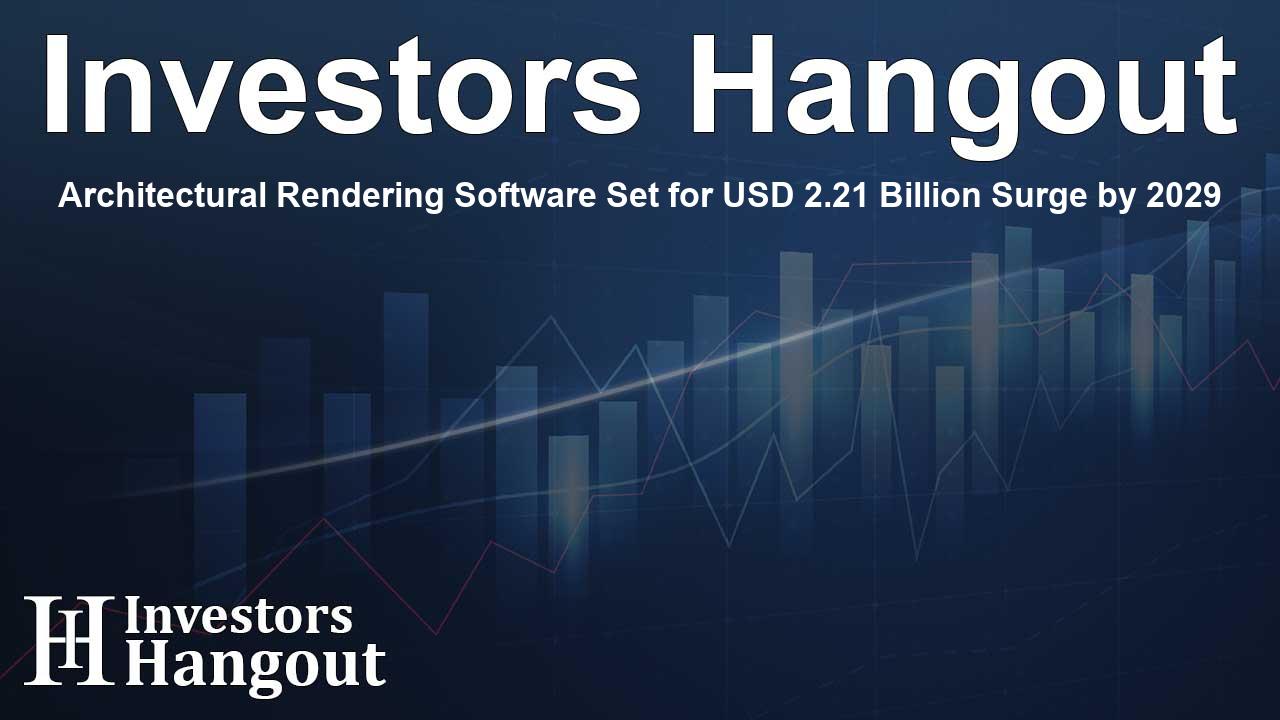Architectural Rendering Software Set for USD 2.21 Billion Surge by 2029

Architectural Rendering Software Market Growth Insights
The global architectural rendering software market is set for significant growth, projected to increase by USD 2.21 billion between 2025 and 2029. This exciting trajectory highlights the impact of technological advancements, particularly artificial intelligence (AI) and emerging economies, on the industry's evolution.
Driving Forces Behind Market Expansion
The anticipated growth of the architectural rendering software market can be primarily attributed to intensified demand in emerging economies. As these regions gear up for rapid urbanization, the need for advanced design software that can facilitate visually stunning and precise architectural renderings has surged. AI innovations are fundamentally reshaping the characteristics, leading to high-quality renderings that enhance both speed and accuracy.
The Rise of Non-Photorealistic Rendering
One notable trend influencing the market is the increasing preference for non-photorealistic rendering techniques. This innovative approach goes beyond traditional realism, allowing architects to imbue their designs with a unique style that makes concepts more engaging and expressive. For design firms, this presents a powerful tool for communication in the initial phases of project development, aiding client presentations and conceptual discussions.
Challenges in the Market
Despite this positive outlook, the architectural rendering software market faces challenges, particularly surrounding data format compatibility. Many architectural and engineering tasks involve different software platforms, each with varying data formats, making interoperability a significant hurdle. Architects and stakeholders often encounter difficulties when trying to import or export data between rendering tools, which can hinder collaboration.
Emerging Trends in Architectural Rendering
Several key trends are shaping the future of architectural rendering. The integration of real-time rendering capabilities is becoming a central focus, as clients now demand immediate visual feedback during project development. Additionally, cloud-based solutions are gaining traction, offering users the flexibility of accessing their projects from anywhere, which is critical in today’s fast-paced environment.
Segments Driving Market Dynamics
The architectural rendering software market is segmented into various applications, including residential, non-residential, and others. Within each category, non-residential projects are emerging as a frontrunner in driving demand, boosted by increased investment in large-scale infrastructure and commercial developments worldwide. As sustainability becomes a pivotal concern, architectural rendering software facilitates the visualization of eco-friendly designs that appeal to modern consumers.
Growth in Diverse Industries
Many other industries beyond architecture are harnessing the capabilities of rendering software. Construction firms, property developers, and even marketing agencies are employing these tools to create compelling visual narratives around their projects. Notably, sectors such as media & entertainment find immense utility in rendering software, as it transforms how stories are visually expressed in films and games.
Technological Innovations Enhancing Market Performance
The demand for architectural rendering software is further propelled by advances in 5G network technology, which enable rapid data transfer and support real-time rendering functionalities. This newfound capability is indispensable for sectors reliant on visualization, such as automated vehicle design and industrial simulation.
Notable players in the architectural rendering software market include Autodesk, Maxon Computer, and Luxion, each continually innovating to meet market demands. As the competition heats up, providers are increasing the sophistication of their offerings, integrating advanced visualization, simulation, and cloud functionalities.
Frequently Asked Questions
What factors are driving the growth of the architectural rendering software market?
The growth is mainly driven by increased demand in emerging economies, technological advancements such as AI, and the popularity of non-photorealistic rendering techniques.
What are some challenges faced by companies in this market?
Companies face challenges like interoperability issues and data format compatibility, which can hinder collaboration across different software platforms.
How does non-photorealistic rendering benefit architectural projects?
Non-photorealistic rendering allows for more expressive communication of design concepts, making them visually engaging and easier to understand for clients.
Which industries are utilizing architectural rendering software?
Industries such as construction, marketing, real estate, media & entertainment, and even healthcare are leveraging architectural rendering software for diverse applications.
What role does AI play in enhancing architectural rendering software?
AI enhances rendering software by improving rendering speed, enabling real-time feedback, and facilitating more complex and engaging visualizations.
About The Author
Contact Kelly Martin privately here. Or send an email with ATTN: Kelly Martin as the subject to contact@investorshangout.com.
About Investors Hangout
Investors Hangout is a leading online stock forum for financial discussion and learning, offering a wide range of free tools and resources. It draws in traders of all levels, who exchange market knowledge, investigate trading tactics, and keep an eye on industry developments in real time. Featuring financial articles, stock message boards, quotes, charts, company profiles, and live news updates. Through cooperative learning and a wealth of informational resources, it helps users from novices creating their first portfolios to experts honing their techniques. Join Investors Hangout today: https://investorshangout.com/
The content of this article is based on factual, publicly available information and does not represent legal, financial, or investment advice. Investors Hangout does not offer financial advice, and the author is not a licensed financial advisor. Consult a qualified advisor before making any financial or investment decisions based on this article. This article should not be considered advice to purchase, sell, or hold any securities or other investments. If any of the material provided here is inaccurate, please contact us for corrections.
